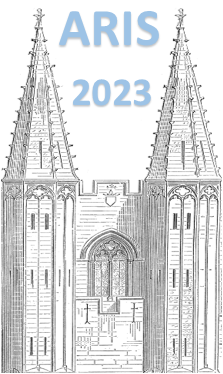Orateur
Description
Determining the stellar origin of the elements observed in our Galaxy today poses one of the key challenges in the field of nuclear astrophysics. Thus, we seek to understand the nuclear processes involved in stellar evolution, as their details give us insight into the fusion pathways and routes to the synthesis of heavy elements. The investigation of radiative capture reactions involving the fusion of hydrogen or helium is crucial for the understanding of said nucleosynthesis pathways as these reactions govern nucleosynthesis and energy generation in a large variety of astrophysical burning and explosive scenarios. However, direct measurements of the associated reaction cross sections at astrophysically relevant low energies are extremely challenging due to the vanishingly small cross sections in this energy regime. Continuous advances in the production of accelerated rare isotope beams provide an opportunity to simulate and study the reactions occurring inside stars. However, many astrophysically important reactions involve radioactive isotopes, which still pose challenges for beam production and background reduction.
To overcome these challenges, dedicated facilities, such as the DRAGON (Detector of Recoils And Gammas Of Nuclear reactions) recoil separator, SONIK (Scattering Of Nuclei in Inverse Kinematics), TUDA, the TRIUMF UK Detector Array for charged particle detection as well as the EMMA (ElectroMagnetic Mass Analyser) recoil mass spectrometer at the TRIUMF-ISAC Radioactive Ion Beam Facility have been designed to experimentally determine nuclear reaction rates of interest for nuclear astrophysics in inverse kinematics.
In this contribution, I will introduce the experimental facilities - with focus on the DRAGON recoil separator - before presenting recent experimental highlights involving the use of radioactive and high-intensity stable ion beams. Finally, I will report on recent and future facility upgrades to extend the experimental capacities and versatility.

